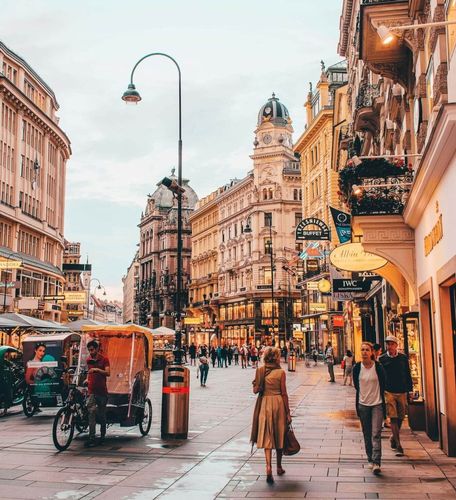Instead of starting with a list of “Top 10 Best Cities in Europe”, we want to begin with you. What kind of traveler are you? Do you love wandering through art museums, or do you prefer sipping espresso on a plaza? Are you drawn to ancient ruins, modern architecture, buzzing nightlife, or maybe a bit of everything?
This guide breaks down European cities by travel styles. You’ll find those cities that match your interests, whether you’re a foodie, a history buff, a nature lover, or someone looking for the most beautiful place to unwind. So instead of feeling overwhelmed by endless options, you’ll come away with a clear starting point in Europe.
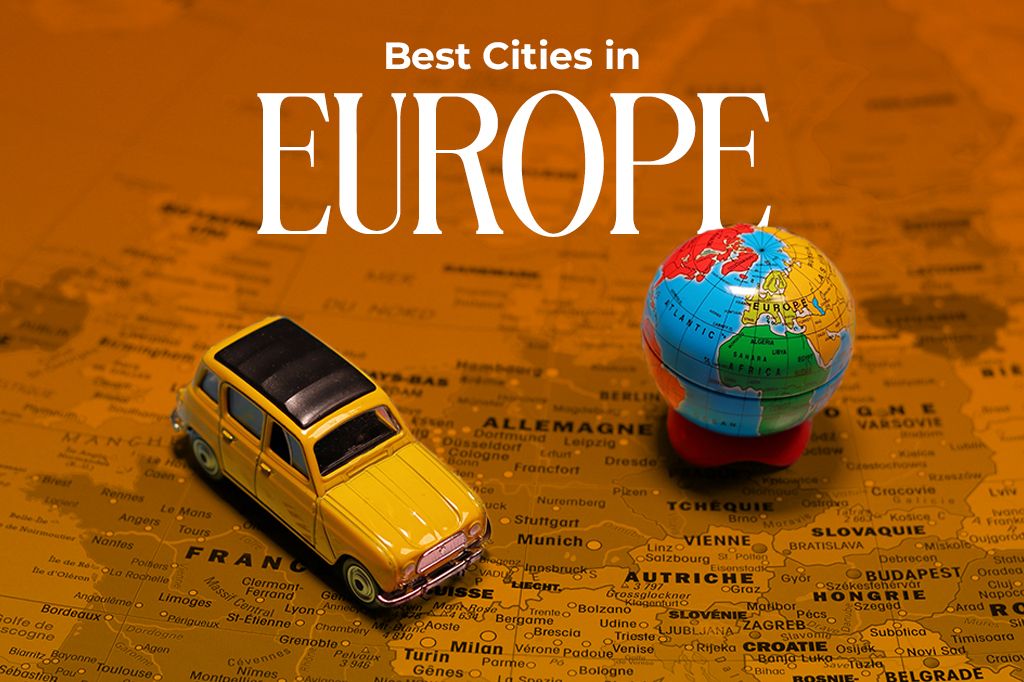
Picture by Gabriel Vasiliu on Unsplash
How to Choose the Right City For You
Choosing the right city is about matching your travel personality with a destination that fits. Think of it like dating: are you drawn to cozy, romantic walks along quiet riversides, or are you into the buzz of nightlife and street culture? If you’re someone who values reflection and local immersion, you might feel more at home in a slower-paced city like Edinburgh or Prague, where you can linger in cafes and soak in the atmosphere.
On the other hand, if your idea of a great trip is jumping from one museum, market, or music venue to another, places like Berlin or Barcelona offer that dopamine. It also helps to think practically: are you traveling alone and need solid public transport and safety? Or are you with family and need interactive attractions and green space? Layer in your budget and your must-haves, and suddenly, the right city becomes a lot clearer. Think about the type of traveler you are, not just what you want to see, and you’ll pick a place that feels like a true match.
No matter which city, Rome’s ruins, Parisian cafés, or the canals of Amsterdam, staying connected should be the easiest part of your journey. Don’t waste time searching for SIM cards at the airport or dealing with roaming fees. Try a free eSIM from Yoho Mobile and get instant access to high-speed data across Europe. No contracts. No physical SIM cards. Just download, activate, and you’re online in minutes. Use code YOHO12 at checkout if you decide to upgrade later for extra savings.
10 Best Cities to Visit in Europe
Paris, France: For Romance and Refined Taste
Paris is often one of the first names that comes up when talking about the best cities to visit in Europe. Most visitors start with the classics. The Eiffel Tower, especially at night when it sparkles every hour after sunset, is an unforgettable sight. Walking along the River Seine from Pont Neuf to the Louvre takes you past major highlights like the Louvre and Notre-Dame. The Louvre’s vast art collection, including the Mona Lisa, is best explored with a guide or a planned itinerary. Add in the Musée d’Orsay, the Arc de Triomphe, and a trip to Montmartre with its Sacré-Cœur views, and you’ve got a memorable first visit.
Those who live in Paris often recommend steering away from the most visited sites, especially during the middle of the day. Streets like Rue Montorgueil show a different side of the city, with small markets, casual restaurants, and a steady rhythm of daily life. The Marché des Enfants Rouges is another option for lunch, offering a variety of food stalls in a relaxed setting. Sainte-Chapelle, with its stained glass windows, offers a quieter alternative to the larger cathedrals. For green space, Parc Monceau is a calm alternative to more crowded gardens. Cafés like Kawa specialize in single-origin coffee and are popular with locals. In the afternoon, places like Place de la République often fill with people meeting friends, skating, or just sitting and talking.
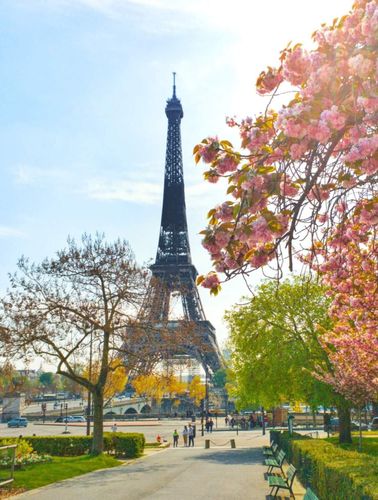
Photo by Dwain Norsa on Unsplash
Pro Tip: Traveling to Paris between November and March (excluding the holiday season) can mean shorter lines, better hotel prices, and more room to explore. Early mornings and late afternoons are often the best times to visit popular sites. While spring and early fall are pleasant in terms of weather, they also bring heavier tourism, so booking tickets in advance helps avoid long waits.
Rome, Italy: For Ancient Splendor and Street Life
If you’re thinking about the most famous cities in Europe, Rome easily earns its place near the top. Why? Because no other city combines ancient ruins, street-side espresso, and world-famous art quite like the Eternal City. Even if you only have two days, you can check off major must-sees like the Colosseum, Trevi Fountain, and Vatican City. It’ll be a fast-paced tour, but you’ll leave with your camera roll full and your belly satisfied.
A five-day stay is the ideal timespan to slow down and go beyond the obvious. You can dive into quieter neighborhoods like Monti, browse outdoor markets, wander through the Villa Borghese gardens, or take a quick trip to nearby spots like Tivoli. The extra days give you the chance to soak in Rome’s rhythms: the clink of coffee cups, the echo of footsteps on cobblestone streets, and the glow of the city at golden hour. Rome isn’t just a stopover, it’s a destination to savor!
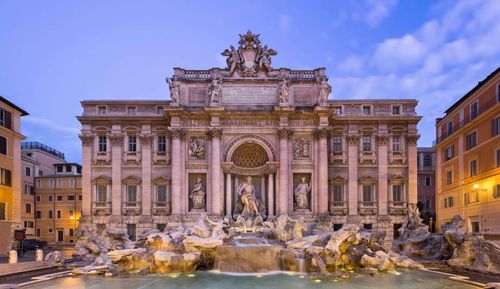
Photo by Andrey Omelyanchuk on Unsplash
London, UK: For Museums, Multicultural Food, and Theatrical Flair
London earns a top spot in this list for good reason. It’s a place where centuries-old history and cutting-edge culture live side by side, and the great news? You don’t have to spend a fortune to enjoy it. Sure, Buckingham Palace and the British Museum are iconic (and the museum is free!), but there are lesser-known spots too.
Stroll through Little Venice, where peaceful canals wind past houseboats and cafes. Or discover the stunning Leighton House, a hidden gem blending art, architecture, and Middle Eastern design that feels like stepping into another world. Bookworms, don’t miss Daunt Books. Set inside a charming Edwardian building, this shop organizes books by country, letting you travel the world just by browsing the shelves.
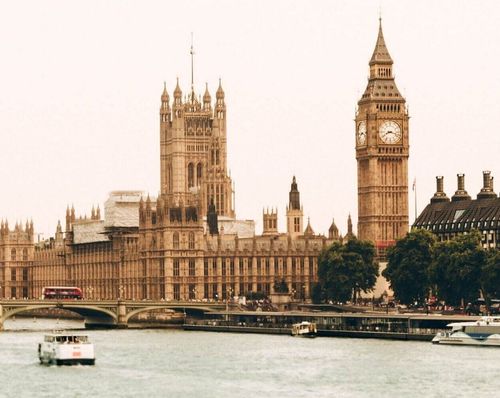
Photo by Ugur Akdemir on Unsplash
To pay or not to pay? One of London’s best qualities is how much you can see for free. World-class museums like the Tate Modern and National Gallery offer inspiring collections with zero entry fees. Want a deeper dive? Pay a little for a guided tour or a special exhibition to make the most of your visit. If your budget allows, splurge on a West End show. Nothing beats live theater in London. Or head up the London Eye for panoramic city views (and unbeatable photo ops).
Amsterdam, Netherlands: For Art, Waterways, and Laid-Back Culture
Amsterdam is often seen as a cyclist’s paradise, but you don’t need two wheels to enjoy everything this European city has to offer. If you’re not up for biking, don’t worry, there are plenty of fun, easygoing ways to explore.
Amsterdam’s canals aren’t just beautiful, they’re also one of the best ways to see the city. Take a canal cruise for a slow-paced journey through neighborhoods lined with historic homes and bridges. Some boats offer meals or even live music on board. Prefer to stay on land? Strolling through areas like the Jordaan gives you a taste of local life with cozy cafés, art galleries, and boutique shops around every corner.
Skip the bike and dive into the city’s world-class museums. The Van Gogh Museum, Rijksmuseum, and Anne Frank House are all easy to reach by tram or on foot. Or head to De Hallen, a trendy indoor space in a former tram depot where you can try Dutch snacks, catch a movie, or browse local crafts.
What about Amsterdam’s famous coffee shops? They’re legal and laid-back, but it’s important to follow the rules. Only use cannabis inside licensed spots, be respectful, and carry ID. If you wander into the Red Light District, be aware: no photos of workers, stay on main paths, and keep your belongings close. By day, it’s also home to the historic Oude Kerk, which offers a quieter kind of exploration.
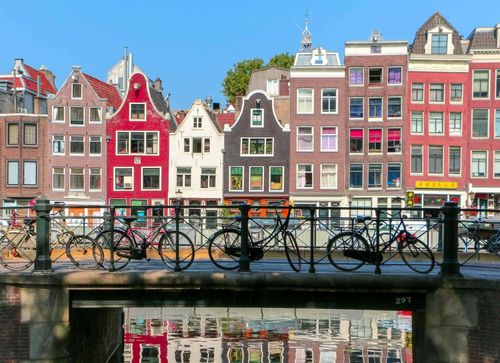
Photo by Gaurav Jain on Unsplash
Amsterdam or Copenhagen? Both cities are perfect for a short escape, but Amsterdam might win you over with its artistic soul, relaxed atmosphere, and canalside charm. Whether you’re into food markets, museums, or just sitting by the water with a stroopwafel, it’s no wonder Amsterdam ranks among the best cities to visit in Europe.
Barcelona, Spain: For Creative Spirit and Coastal Vibes
Barcelona is a city with a rhythm that’s easy to fall into and hard to leave. That’s a big reason why it consistently ranks among the best places to go in Europe.
One of the best things about Barcelona is how people live here. Mornings are slow and quiet, cafés open late, and breakfast often means a simple cortado and pastry. Afternoons are for long lunches (the famous “menu del día” is a must), and the energy really kicks up in the evening. People stay out late, especially in the warmer months when the city buzzes after sunset.
True tapas culture in Barcelona means hopping from one local bar to another, sharing small plates with friends, and pairing it all with vermouth or a cold beer. Gràcia and the El Born neighborhood are great for this kind of night out. Whether you’re into anchovies, spicy patatas bravas, or creative fusion tapas, the city has something for every taste (and budget).
Whether you’re wandering the old stones of the Gothic Quarter or sipping vermouth in a sunny Gràcia square, Barcelona offers more than sights. It’s that feeling, that balance of beauty and daily joy.
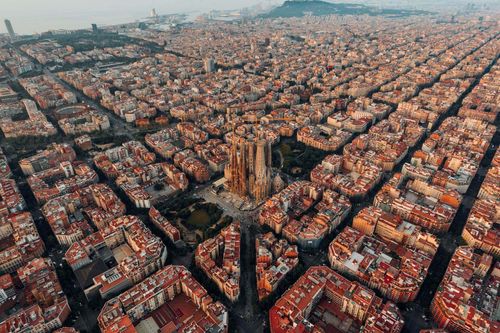
Photo by Logan Armstrong on Unsplash
Athens, Greece: For Ancient Sites and Sunset Views
Dramatic ruins, buzzing street life, and strong café culture. If you’re crafting a European itinerary, don’t just pass through. Athens deserves its own spotlight as one of the best cities to travel in Europe, and not just because of the past, but because of everything it still is.
Of course, you’ll want to see the Acropolis, and you should. It’s jaw-dropping up close, especially if you visit early or at sunset. But Athens is more than ancient stones. Wander down side streets and you’ll find indie bookstores, open-air cinemas, and locals sipping coffee for hours at neighborhood cafés. If you’ve ticked off the big sites, dive into places like Exarchia, a gritty but artistic district known for its murals and music scene, or stroll through Mets, a quiet neighborhood with leafy streets and scenic views. These areas give you a break from tourist-heavy zones and offer a deeper connection with daily Athenian life.
Athens also makes island-hopping super easy. In fact, that’s part of its appeal. Hop a ferry from nearby Piraeus and you can be on Aegina or Poros in under an hour on a beach day or overnight trip. You can explore ruins in the morning, then sip wine by the sea before sunset. That kind of contrast is what makes Athens so memorable.
Athens offers something that is not available in any other part of the world: an authentic experience wrapped in world history, all with easy access to island escapes. It’s a place where locals still live, eat, and unwind in the same streets where philosophers once walked.
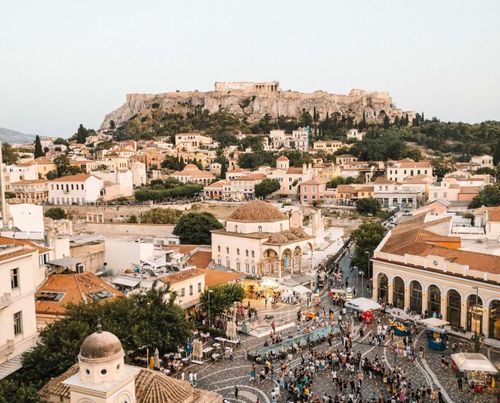
Photo by Andrea Leopardi on Unsplash
Vienna, Austria: For Elegance, Opera, and Old-World Cafés
If you’re planning a trip through cities in Europe, Vienna should be high on your list, especially if you love elegance, culture, and a good slice of cake with your coffee.
This is a city where grand palaces and quiet cafés live side by side. You can spend your morning wandering through the opulent rooms of Schönbrunn Palace, and your afternoon sipping a melange in a velvet-upholstered chair at Café Central, where writers and philosophers once gathered. Even if you don’t know much about classical music, the city makes it easy to fall in love with it. You’ll find everything from beginner-friendly concerts in stunning churches to full-blown opera performances in world-famous venues.
In a world of fast travel and over-packed itineraries, Vienna reminds you that the best experiences are often the quietest ones. There’s something special about how this city invites you to take your time, whether that means people-watching in a coffeehouse, reading a book while the pianist plays softly in the background, or strolling tree-lined boulevards past museums and monuments.
Lisbon, Portugal: For Sunny Mornings and Slow Afternoons
Lisbon might not shout for your attention like some of Europe’s bigger capitals, but it doesn’t need to. The city wins you over slowly, with sunlight bouncing off its tiled facades, the clatter of trams on cobbled streets, and the salty air rolling in from the Tagus River.
One of the best ways to take it all in is by hopping on the famous Tram 28. Locals know to avoid the long tourist lines by starting the ride at Campo de Ourique, the quieter end of the line. Go early in the morning or after dark to skip the crowds and get a seat. Standing on a bumpy hill climb is not the full experience!
Afterward, explore Lisbon’s split personality. Wander Alfama’s winding lanes, where ancient buildings lean in like old friends and Fado music drifts from tucked-away bars. Craving something livelier? Bairro Alto wakes up after dark, turning into a buzzing maze of open-air bars and music until the early hours.
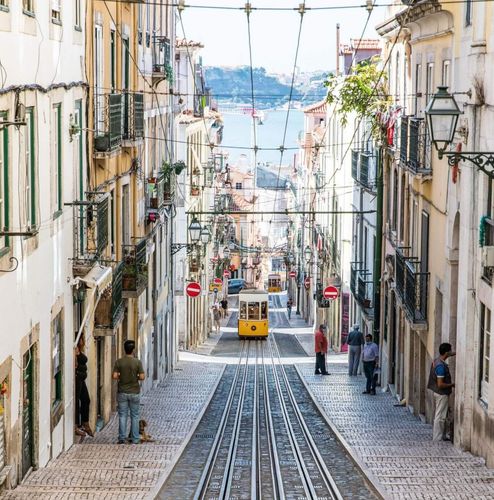
Photo by André Lergier on Unsplash
Budapest, Hungary: For Thermal Baths and Hidden Ruins
If you’re hunting for one of the most famous cities in Europe, look no further than Budapest. Budapest is famous for its warm, soothing, and mineral-laden thermal baths.
-
Széchenyi is the biggest and liveliest. Think huge outdoor pools (even in winter!), plenty of saunas, and people playing chess in the water.
-
Gellért is the elegant one. Inside an Art Nouveau building, it’s quieter and great for a relaxing afternoon.
-
Locals swear by Rudas or Király for a more authentic and peaceful experience. Rudas even has a rooftop pool with an epic view of the Danube.
Budapest’s skyline is just as impressive from above, and you don’t need to splurge to enjoy it. Try 360 Bar for panoramic views with a drink in hand, or climb to the top of St. Stephen’s Basilica for a postcard-perfect lookout. Some hostels and cafés also have cozy rooftops that are either free or super cheap to access. Ruin bars are a Budapest original, bars set up in abandoned buildings and old courtyards, filled with random furniture, funky lighting, and a whole lot of character.
-
Szimpla Kert is the most iconic, with everything from vintage bathtubs to live bands.
-
Places like Instant and Fogas Ház turn into full-on party zones at night, with different rooms playing different music.
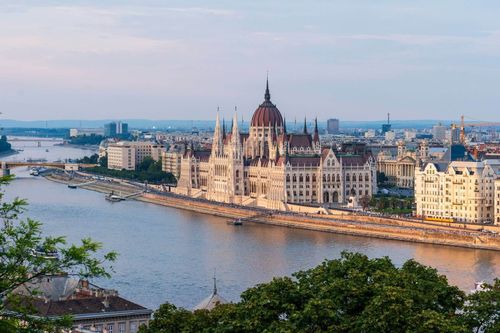
Photo by Ervin Lukacs on Unsplash
Berlin, Germany: For History, Expression, and Edge
Berlin wears its Cold War past like a badge of honor. You can walk along preserved sections of the Berlin Wall, explore Checkpoint Charlie (once the tense border crossing between East and West), or visit the Berlin Wall Memorial with its haunting watchtower and photo displays honoring those affected by the division. These sites give you a clear, tangible sense of the city’s dramatic past.
But Berlin is more than history. It’s a playground for creatives and free spirits. Neighborhoods like Kreuzberg and Friedrichshain pulse with street art, independent theaters, and music venues that keep the city buzzing with energy. If you want to experience Berlin’s alternative vibe, check out RAW-Gelände, a former industrial area turned vibrant cultural hub filled with clubs, markets, and stunning murals.
Berlin or Munich? While Munich offers traditional Bavarian style and well-known festivals like Oktoberfest, Berlin is the place for bold reinvention and artistic expression. Berlin is the perfect place to explore impactful history or dive into a dynamic art scene.

Photo by Moises Gonzalez on Unsplash

